The Pacific Northwest region is an area with a rich bounty of natural foods. And among the coastal communities that stretch from southern Oregon up into British Columbia, the abundance of fresh, delicious seafood can be found in myriad locations.

Every seaside town has crab shacks and fish ‘n’ chip shops, and fishermen’s wharves where you can buy the freshest of the day’s catch. And the larger port cities of Seattle, Portland, Vancouver and Victoria feature dockside markets and upscale restaurants, offering the finest of seafood gastronomy.
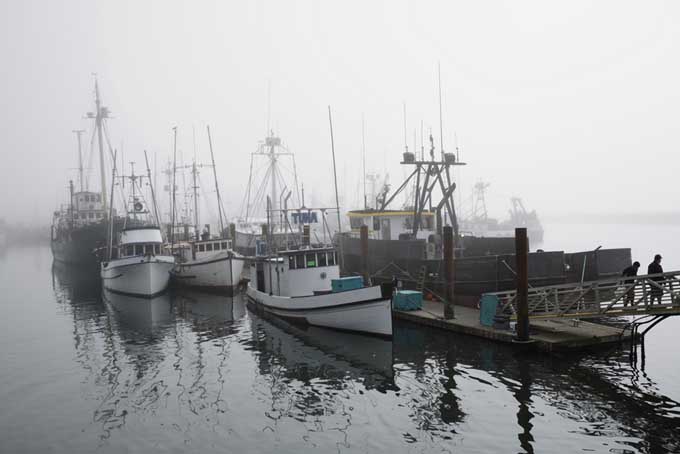
The area is a unique and eclectic fusion of native and immigrant cultures, cuisines and climate. And with so many influences, it can be a bit of challenge to actually define the flavor of Pacific Northwest cuisine.
Traditional and contemporary, with a blend of influences from home and abroad, a common thread that runs through the food fabric of the area is this: it’s fresh and simple, and features the rich abundance of the region.
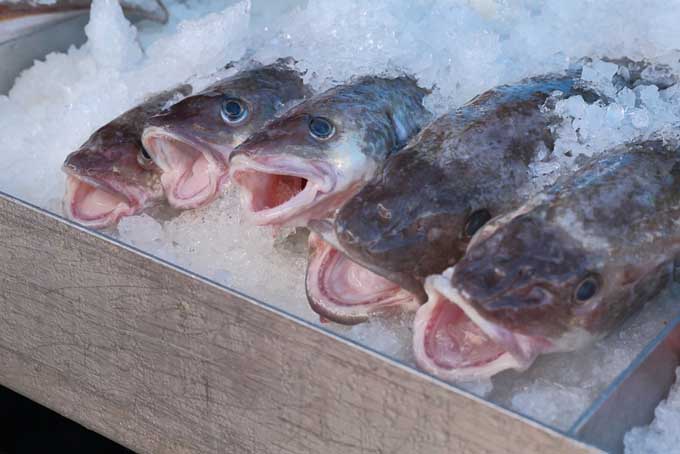
Let’s have a look at how some of these influences have created today’s flavors of the northwest, and then we’ll sample some of its wonderful tastes with a few favorite recipes.
Natural Northwest Bounty
The cooking style of the Pacific Northwest is both traditional and modern, and it also carries a substantial Asian flavor. Salmon, Dungeness crab, spot prawns and a variety of clams are very much identified with the cuisine of the Pacific Northwest, and it also draws heavily on the strong First Nations presence in the region.
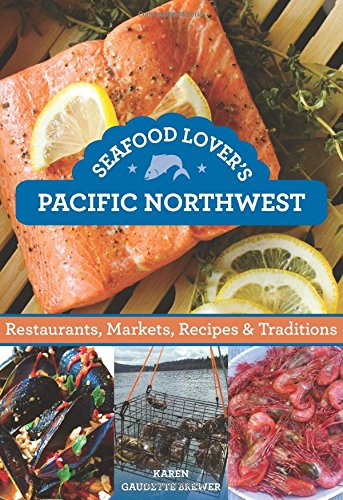
Foodal recommends Seafood Lover’s Pacific Northwest: Restaurants, Markets, Recipes & Traditions
Indigenous peoples have long enjoyed the abundance of foods provided by the ocean and seashore, hunting and gathering along the varied geography of the area, with inlets, fjords and archipelagos cut into steep rock, and long stretches of sandy beaches that give way to both marshy dunes and the coastal mountains.
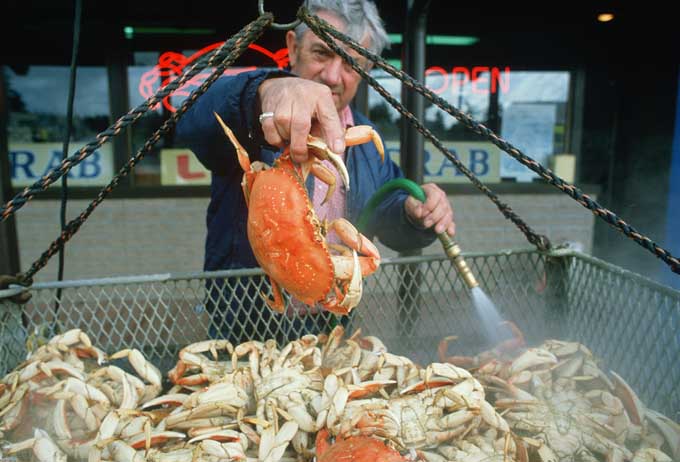
Vast quantities of seaweed, fish and shellfish were available everywhere, and whales were hunted in some areas.
The most important food source by far was the Pacific salmon runs, which arrived in annual migrations and provided ample supplies of fresh and dried food year round.
The native people gathered additional nutrition from the ocean in the form of seaweeds and sea vegetables, particularly red laver, giant kelp, and flowering marine eelgrass. Some of these greens were eaten raw, while others were dried and packed into cakes to be reconstituted with slow cooking methods.
The Explorers
European colonial interests began sending expeditions to explore the west coast, beginning in the early 1500s when Spanish seafarers reached the Isthmus of Panama. This was followed throughout the 16th and 17th centuries by more Spanish exploration up the coast, as well as English expeditions. By the mid 1700s, Russian fur trappers and explores were establishing settlements in Alaska.
By 1870, the first American transcontinental railway reached the Pacific Ocean in San Francisco, and by 1885 a similar transcontinental rail line linked eastern Canada to the Pacific at Port Moody, an outlying area of Vancouver.
Another great one for your book shelf is The Paley’s Place Cookbook: Recipes and Stories from the Pacific Northwest
Chinese immigrant workers were vital in the construction of these rail lines, and today both San Francisco and Vancouver have the largest Chinatown districts on the West Coast, bringing with them the influence of Asian flavors and cooking styles such as stir fry.
The rail lines opened the area to immigration by more European settlers, and coastal communities were established based on the rich resources of logging and fishing. The Gold Rush era of the late 1800s brought an even broader ethnic diversity west, and many of these individuals remained even after the gold was gone, introducing even more distinctive flavors.
Fusion Cuisine
As these diverse cultures came into contact with each other, new ingredients and cooking methods were introduced as cooks adapted and adopted new methods.
It’s in this innovative style that the flavors of the Pacific Northwest can be best understood. A hybrid cuisine has emerged, blending traditional techniques with fresh local and seasonal ingredients.
The panache and cooking techniques of today’s dishes mirror not only native influences, but also the salting, pickling and drying of fish and the use of dill with salmon that comes from Norwegian settlements.
The Asian influence can be seen in the many sushi bars that take advantage of local seafood harvests and tempura based fish delicacies here, and seaside English fish ‘n’ chips shops offer an updated local twist with breaded razor clams, calamari and battered spot prawns on a stick. Vietnamese pho noodle soups often feature in-season crab, clams, prawns and salmon.
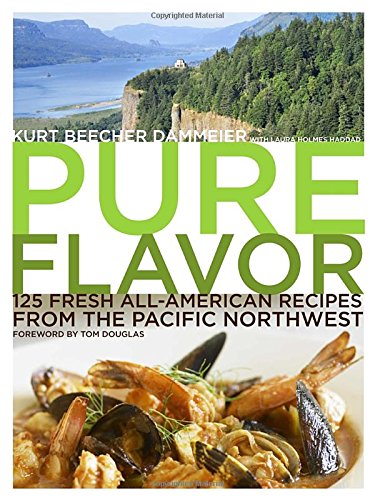
Pure Flavor: 125 Fresh All-American Recipes from the Pacific Northwest is a must have cookbook for any aspiring home chef’s cupboard.
Not surprisingly, salmon is the ingredient that first comes to mind in this region, and with good reason. Several varieties are available and may be prepared easily and quickly, offering rich flavor. They’re also an excellent source of protein and omega-3 fatty acids, which are so important for heart health.
Some of the preparation methods featured in local fish markets and restaurants include smoking, candying, drying to make jerky, baking, poaching, planking, grilling, and using as a base for chowder and soups. Salmon salads are a summertime must.
Other popular coastal seafood options include:
- Dungeness crab
- Alaska king crab
- Scallops
- Clams
- Mussels
- Oysters
- Prawns
- Shrimp
- Abalone
- Squid
- Octopus
The Intertidal Zone
With some wonderful beaches found in this region, a day spent harvesting on the seashore is a fun activity, and the intertidal edge areas are the places where the greatest number of species cross paths.
In the Northwest you can find: razor, littleneck, butter, geoduck and Manila clams, coastal Dungeness crab, goose barnacles, mussels, octopus, oysters, scallops, sea cucumbers, sea urchins, shrimp, prawns, softshell and hard-shell clams, squid, and a large selection of seaweeds. Learn how to clean, prepare, and cook clams and mussels here.
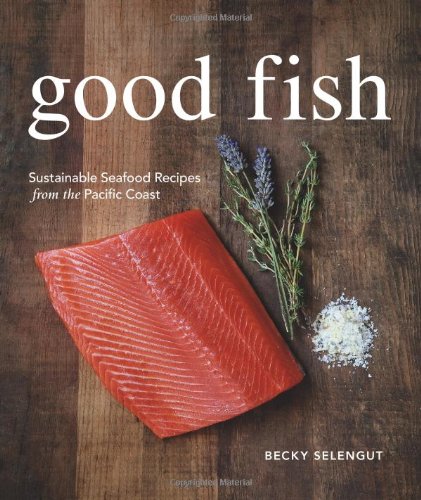
Good Fish: Sustainable Seafood Recipes from the Pacific Coast is another great cookbook for your collection (can you have too many?)
If you plan to gather any yourself for consumption, always check for local harvesting restrictions or permit requirements. Know the area’s regulations and check for beach closures, health advisories and marine biotoxin (Red Tide) closures caused by natural algae blooms.
Recreational Fishing and Shellfishing
If you’re thinking of sport fishing or foraging for your own shellfish and seaweed, you may need a license from the appropriate government agencies:
- In British Columbia, go to the Department of Fisheries and Oceans for saltwater fishing licenses. Collecting shellfish and seaweed for personal consumption doesn’t require a license.
- In Washington, a license is required for both fishing and shellfish/seaweed collecting. Visit Washington’s Department of Fish and Wildlife for permits.
- And in Oregon, go to the Department of Fish and Wildlife for a summary of which shellfish may be gathered, which require permits to collect, and for fishing licenses.
Lingcod, sole, halibut, Pacific herring, flounder, surfperch, croaker, rockfish, smelt and salmon are open to recreational and sport fishing along the coast. And of course, always check for regulations regarding catch limits, sizes and opening dates.
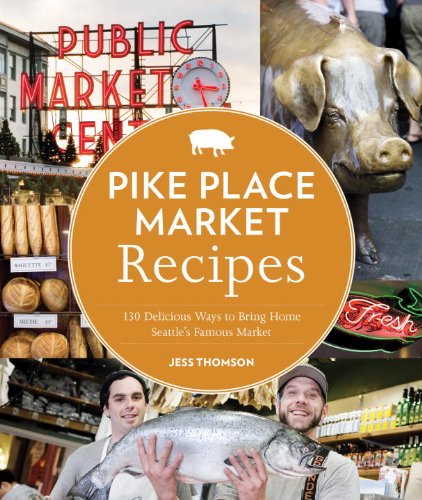
One last recommendation: Pike Place Market Recipes: 130 Delicious Ways to Bring Home Seattle’s Famous Market
Well, that concludes our brief seashore adventure along the coast of the Pacific Northwest. Just in case you can’t make the trip out west in person, here are a few of our favorite recipes for you to sample for yourself, to fully enjoy the flavors of this distinctive cuisine firsthand.
Cedar Planked Grilled Salmon
Grilling on wooden planks has been popular for the past few years throughout the USA and Canada, but the trend started in the Pacific Northwest with salmon and cedar.
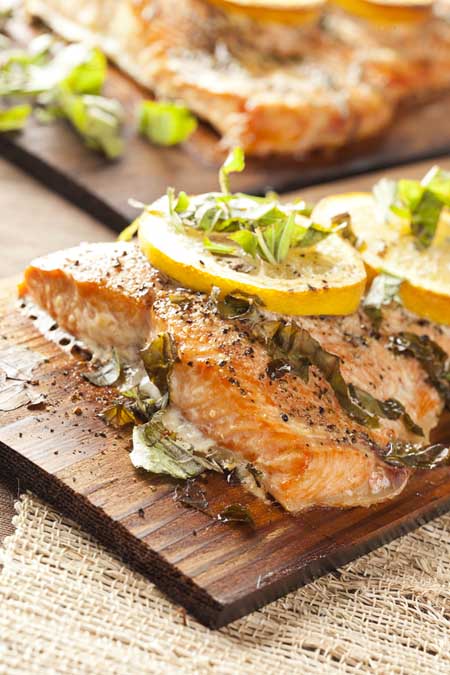
It’s gotten so popular that even crockpot renditions of the technique have been developed. This is a simple variation, but feel free to make it more complex and/or change it up.
- 2 1/2 - 3 pounds Salmon fillets with skin on
- 1 tablespoon olive oil
- 1/4 teaspoon sea salt
- fresh black pepper don’t be shy – use a bunch*
- 1 lemon juice and zest from ½ of the lemon ½ thinly sliced
- 1 tablespoon fresh dill minced
- 1 tablespoon fresh parsley minced
- 2 - 3 tablespoons white wine or whatever you’re using to soak the planks with.
- white wine, Madeira, sake, or cider (enough to soak the planks).
- cedar planks big enough to accommodate your fillets*
- In a shallow dish, soak the cedar planks for at least one hour before grilling, preferably two.
- In a jar with a tight sealing lid, combine all the ingredients except the salmon and shake well.
- 15 minutes before your grill is ready, place the salmon in a shallow baking dish and pour the grilling sauce over the top to marinate lightly.
- Heat your barbeque to 350 degrees F.
- Lay the soaked planks on the grill, with a bit of room between them.
- Brush the salmon with the grilling sauce on the non-skin side, and lay on the planks with skin side down and garnish along the top with lemon slices. Close the lid.
- Cook covered for 10 – 15 minutes, small fillets will cook quicker. They’re ready when the tip of a knife inserted into the center of the meatiest part flakes apart easily and they’re a uniform, opaque pink.
*Fresh ground black pepper is one of the best investments that you can make for your basic spice selections. See Foodal's top recommended pepper grinders for more information.
**Look for cedar planks in the seafood section of your grocer’s, the fish market or where BBQ’s and smokers are sold or order a few from Amazon.
Planks can be reused until they become too charred. Just wash up with your BBQ tools and remove any skin that’s stuck to the surface, rinse and air dry before storing.
See Foodal’s Guide to Plank Grilling for more information on this technique.
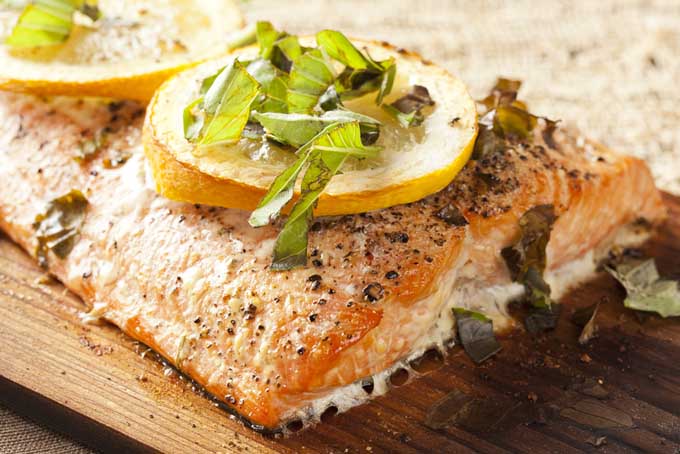
Coconut Popcorn Prawns with Dipping Sauce
One of our local fish markets serves the best fish ‘n’ chips in town, but these light and tasty prawns always seem to find their way down to the beach with us on a summer evening.
Need help with deveining shrimp? We’ve got an article about that.
- peanut oil for frying
- 1/2 cup all purpose flour
- 1 teaspoon salt
- 1/2 teaspoon baking powder
- 2/3 cup water
- 2 cups shredded unsweetened coconut
- 1/2 cup bread crumbs
- 1 pound medium or large prawns peeled & deveined with tail on
- 1/2 cup lime marmalade
- 2 tablespoons rice wine vinegar
- 1/2 teaspoon red pepper flakes
- In a small pot, add all dipping sauce ingredients and turn on low. Heat for 10 minutes, stirring every few minutes.
- In a large, heavy pot heat 2-inches of the peanut oil to 325 degrees F.
- In a medium mixing bowl, whisk together the flour, salt, and baking powder. Add the water a bit at a time and whisk until smooth. Let the batter stand for 15 minutes.
- On a plate, toss the coconut and bread crumbs together.
- Holding the prawn by the tail, dip the shrimp into the batter, coating well. Remove the shrimp and dredge in the coconut mixture, pressing to help the coconut mix stick.
- Fry the shrimp in small batches in the hot oil for 1 to 2 minutes or until brown. Use a slotted spoon to transfer the shrimp to a cooling rack with paper towels underneath to catch the oil.
- Serve the shrimp with the dipping sauce.
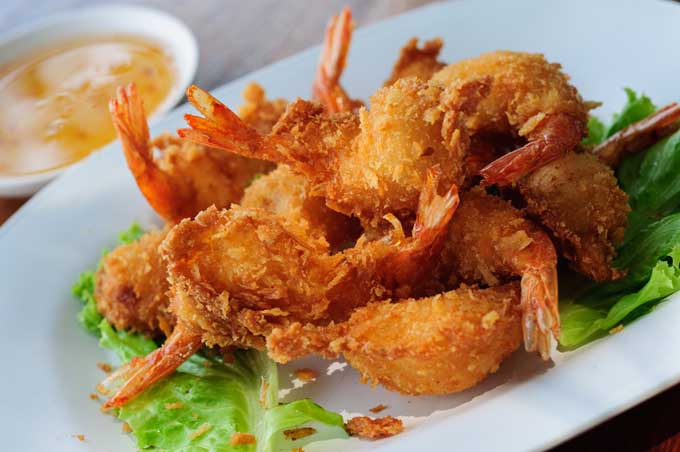
Pam’s Fresh Crab Dip
My sister Pam has three commercial fishermen in her family, so fresh seafood is always present at family gatherings. And this delicious, rich dip always has a crowd around it! Serve with flat breads, crackers or sliced baguettes.
- 1/2 cup sour cream
- 1/2 cup mayonnaise
- 1 1/2 tablespoons horseradish
- 1 tablespoon sweet pickle relish
- 1 teaspoon Worcestershire sauce
- 1 teaspoon fresh lemon juice
- A dash of catsup just enough to make the mixture light pink
- 1/3 teaspoon sea salt
- 1/4 teaspoon fresh ground pepper
- 2 1/2 cups fresh crab meat broken up
- Place all ingredients except the crab, salt and pepper in a medium mixing bowl and stir together well.
- Taste and adjust to suit.
- Stir in the crab with a fork, season with salt and pepper.
- Cover and refrigerate.
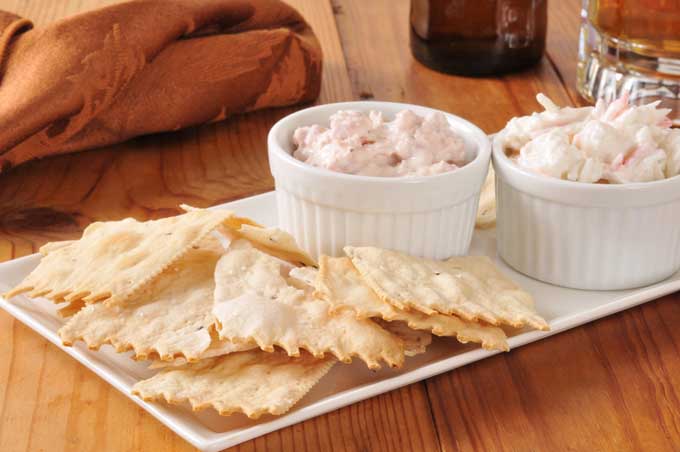
About Lorna Kring
Recently retired as a costume specialist in the TV and film industry, Lorna now enjoys blogging on contemporary lifestyle themes. A bit daft about the garden, she’s particularly obsessed with organic tomatoes and herbs, and delights in breaking bread with family and friends.

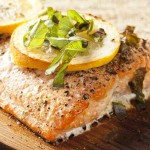
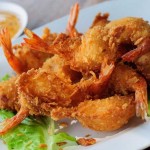
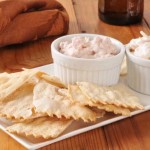



This post makes me wish I weren’t allergic to shellfish. At least I can still enjoy fish though, mmm salmon. I absolutely love smoked salmon. I’ve always wanted to visit the Pacific Northwest, and that’s one reason. Really interesting to read how all the flavors evolved as well.
Bummer about the allergy, but as long as you can enjoy fish that’s not so bad. Glad you enjoyed the post.
The importance of sustainable seafood could not be spoken of enough. There’s actually an ingenious way oceanographers have figured out how to keep fishermen in business while maintaining the proper amount of each sea creature. The biggest issue is getting fishermen in very poor countries to stop using certain techniques &follow instruction. Their necessity will always outweigh fear of extinction.
For sure it’s a big hurdle to overcome Joan, and it is difficult to get people to think long term when they’re hungry today. But at least there’s an idea in place, and as you point out, now the focus has to be on implimentation.
The first time I ever tasted salmon was in the Pacific Northwest. I was amazed at the variety of seafood available there, and always enjoy the natural beauty of the area, as well as the abundant fish, crab, and other seafood dishes in the wonderful restaurants, when I visit family there. This article brought back some happy memories, and I’m looking forward to trying some of the recipes.
Coconut Popcorn Prawns with dipping sauce is a must try…thank you very much for the recipe 🙂 …am a bit reserved where squids are concerned…a story is told of a woman eating squid at a restaurant.. i bet it was not cooked properly.. she went home and squids started forming in a stomach, turns out she ate squids eggs and little babies were forming… had to be done for surgery 🙁 … {wasn’t giving out the story to spook people out… just a little piece of information}
I love fusion cuisine. I am an avid seafood eater. I just tried fried calamari for the first time and it was great. Me and my mom just went to the China Town market and they had a great selection of fish. We got catfish which was good but I want to try crawfish next. I also love sushi
That’s great about the calamari, and the shops in any Chinatown are a great resource for finding fish that’s a bit off the beaten grocery store path. Keep us posted on your seafood adventures…
I never realized the variety of foods available in the Pacific Northwest, save for the myriads of fish. I knew some of the history of the region, having taken history courses in the past, but it was interesting to ponder the Asian influences on the area’s cuisine. This was such a coincidence as well; I had just had cedar plank salmon at a local restaurant, and I was wondering how to make it. Thank you for the article!
The Asian factor is a very distinctive influence, and it is kind of cool to see how all the pieces fit together for an end product. Glad you liked the post, and hope you enjoy the home-planked version!
For someone who came from Southeast Asia, I’m curious as to which seafood’s better: our seafood or the Pacific Northwest coast seafood… Then again, both comes from the Pacific Ocean, so they may be just the same XD
I’d love to try each and every seafood there is, in almost every way (well, there may be some ways I wouldn’t like to try them… like eating them ALIVE << lol, I've only heard of octopus and squid eaten alive but never crustaceans and fish… I wonder how that would be?… Hm…). Still, crabs are my favorite. YUM.
Nothing beats fresh seafood!!! <3
I live in the Pacific Northwest. I was born and raised here. You might be surprised that I, like a lot of people originally from here, don’t really care for most seafoods. It seems that tourists and transplants are actually the ones that like it the most. There are specific seafoods that I like, but I don’t like it as a general category. I like Salmon, there is a specific clam chowder from a specific business that I like, I like halibut, I like cod provided it isn’t lingcod. Forget lobster and many types of shellfish.